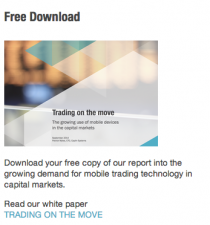In an environment where technology is constantly evolving and customer preferences can change rapidly, Caplin’s agile approach to project development enables banks to see a rapid return on their investment.
The banking sector has a patchy record at best when it comes to implementing major technology projects. Despite massive expenditure on hardware, software and consultancy – research from Celent suggests that European banks alone spent more than $70bn on software and information technology in 2017 – institutions are often left unsatisfied with the end result.
Lengthy implementation cycles are a significant factor in banks’ dissatisfaction with large scale projects, which is why Caplin’s preferred engagement model is to start small with a ‘lite’ proof of concept and analysis phase. This is commercially less risky than a full project while allowing for planning of the ‘main event’ and leaving the customer with working software and collateral that they can show around the organisation and use to build support for the larger project.
Agile software development is not a new concept. The agile ‘manifesto’ was written in 2001 by a group of developers who suggested that producing working software was more important than creating mountains of documentation and that vendors should prioritise customer collaboration and the ability to respond to change.
This approach allows new products to be brought to market more quickly and scaled more rapidly than under conventional development processes. Our projects are delivered in two-weekly ‘sprints’ with tight feedback loops for each cycle, which enable us to quickly identify what is working well and build on the elements of the project that are meeting the client’s objectives.
The agile approach to development has been implemented across trading markets, enabling banks to test new products and get them in front of their customers in as little as a few weeks. Because the process is completed in such a short timeframe it is possible to demonstrate value very quickly.
The key here is to focus on the highest value functions that need to be delivered. In many cases developers are asked to work on multiple projects simultaneously, even though the reality is that they will only ever be able to deliver a small fraction of these projects to completion.
Another benefit for banks in adopting an agile approach is that they can quickly adapt the development process to reflect feedback from customers and react more rapidly to changes in the regulatory environment.
This is vital in fast-moving markets where an application could be effectively redundant by the time it goes through the conventional development process – too much forward planning doesn’t always work!
Filed under: Agile, Customer experience, DevOps, FX, Single-Dealer Platforms, Technology Trends, Web trading technology | Leave a comment »




